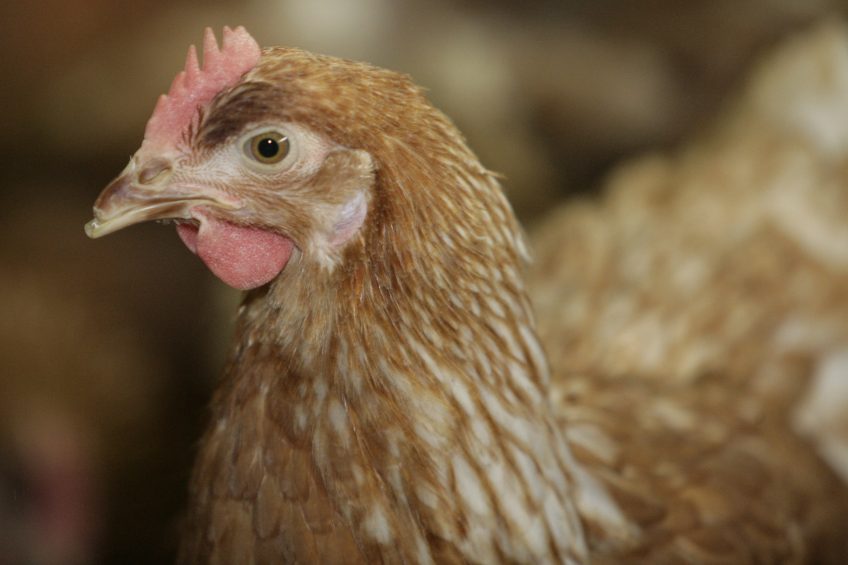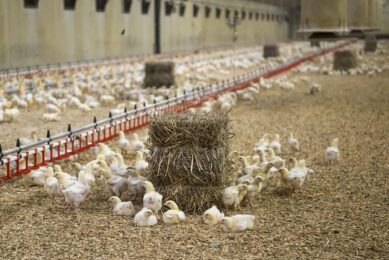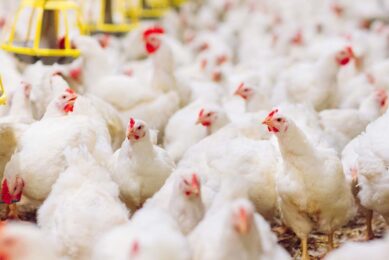The case for extending free-range laying cycles

Free range egg producers have been looking at the case for longer laying cycles for their birds. Poultry World takes a detailed look at some of the issues.
Depleting free-range flocks while egg quality is still good in later lay could be wasting the genetic potential of the modern hybrid laying bird.
Modern selection methods have improved end-of-lay quality considerably over recent years, with many flocks approaching 70-72 weeks at 90% production with shell quality. There are growing concerns that opportunities for improved welfare, profitability and a lower environmental footprint have been missed.
As a result, the free-range egg sector has been looking at whether now is the time to change to a new standard depletion at 80 weeks.
Potential
Scientific research by Bain, Nys and Dunn, published in 2016, showed the recent advent of molecular genetics in breeding programmes offered considerable hope that sustained egg quality and the health and welfare of the birds in longer laying cycles could be balanced for the good of all in the industry, including hens.
They said the “longer life” layer, capable of producing 500 eggs in a laying cycle of 100 weeks was on the horizon, bringing with it the benefits of a more efficient utilisation of diminishing resources, including land, water, raw materials for feed.
Historically, breeders measured traits in pure lines to 60 weeks of age, Hendrix Genetics extended this to 75-80 weeks in 2000 and to 100 weeks in 2009, with an ambition to get to 110 weeks in the not too distant future.
Management critical
Nick Bailey, managing director of Joice and Hill Poultry, the UK arm of Hendrix Genetics, says good management and the correct nutrition, rearing and vaccination strategies were critical success factors in producing birds capable of laying into later life.
He referenced Dutch farms, where white birds in barn systems regularly hit 100 weeks in production.
“When comparing the Dutch and UK situations you have to remember you’re comparing white birds in aviary systems with brown birds on free range.
“White leghorns have been more responsive in our selection for birds over longer production cycles. The Dekalb White bird has been shown to be particularly good in floor systems and over longer cycles.
The Dekalb White is seen as efficient, docile and capable of laying up to 500 eggs and viewed in some quarters as the ideal bird as the industry transitions from enriched/colony cages to cage-free and pasture-run systems.
With a high number of first quality eggs suitable for table eggs or processing purposes, the breed’s good temperament means management under today’s welfare standards is reasonably easy.
Its latest figures for 18-90 weeks show:
- Liveability – 95%
- Age at 50% production – 141 days
- Peak of production 0 – 96%
- Average egg weight – 62.5g
- Eggs hen housed – 427
- Egg mass hen housed – 26.7kg
- Average feed intake – 109g/day
- Cumulative feed conversion rate – 2.02kg/kg
- Body weight – 1725g
- Shell strength – 4,200g/square cm
- Haugh units – 83
Mr Bailey said in free range systems there were a number of factors which currently inhibit longer cycles:
“Flat deck units lack the space for manure for longer periods than 72 weeks – multi-tier units don’t have this limitation.
“Other factors include greater disease pressure as the birds are going outside and environmental factors, especially temperature,” he stressed.
However, Mr Bailey added that there were colony clients in the UK already using much longer cycles of more than 85 weeks even with brown birds.
Benefits
In research commissioned by the British Free Range Egg Producers’ Association (BFREPA), a range of benefits to keeping flocks longer were identified.
These include:
- Higher welfare as fewer hens, and particularly male chicks, are required to produce the same number of eggs;
- Shorter downtime as a proportion of the production period, as costs that are “once per cycle” are diluted;
- Lower pullet depreciation per dozen eggs;
- Eggs at end of lay are often the most valuable as they are larger in size;
- A lower carbon footprint per egg; less feed per egg; fewer vehicle movements; less hatchery and processing energy per egg and less rearing and brooding.
Rearing
You may expect a pullet rearer, whose business is likely to be affected negatively by longer laying cycles, to be reticent about the concept. But Steve Carlyle, of Country Fresh Pullets, agrees that there is plenty of potential still left in the bird at 72 weeks.
Mr Carlyle says the start of lay was the critical transition point, and in order for the flock to perform and last longer cycles it needs to be well adapted to laying farm conditions.
During the rearing period, lighting programmes have to be well regulated with 20 lux of lighting for the first few days of brooding for 23-20 hours in the first week, declining by one hour every three-to-four days until a day length of 10 hours is reached at around five-to-seven weeks of age. The lux level will have been reduced to around 5 lux by four weeks.
Other issues to take into account include ensuring the house is dry and warm when the new chicks arrive with water at body temperature in the drinkers. The rearing house litter needs to be friable and access to cellulose (fibre) is important for good feathering in rear as well as in lay.
Birds should be walked regularly to get them used to people and noise. And mirroring the laying site is vital in terms of type of lighting, intensity, feeding systems/times and drinking systems.
He adds a number of his free-range producers were looking at moving to a longer laying cycle, explaining Noble Foods is currently trialling taking birds to 76 weeks.
“We are seeing birds at 92% production level at 52 weeks and high eighties at 72 weeks, so 76 is definitely possible. But if you do get a poor flock that is not performing then you face a risk of four weeks of diminishing returns.”
One other issue to consider, he added, was vaccination. Longer cycles could mean that vaccination cover, for example against salmonella to 60 weeks, would leave the birds vulnerable in the later stages of their lives.
Nutrition
Aidan Leek, poultry technical manager at Trouw Nutrition, explains nutrition has a key role, particularly in establishing the birds properly.
The crucial elements for a successful longer-laying bird were actions taken in the first 10-15 weeks of its life. Key aspects to consider include feeding for the correct development in the rearing period, sufficient energy and protein provision at the start of lay and flatter diet ranges to reflect the needs of hens with greater laying persistency.
“It is important to control egg size early on. If you have egg weight issues early on it is much more difficult to correct.
“What breeding companies have been driving has been to get a slightly heavier egg weight early on and then a flatter weight profile.”
He adds there was now a much greater on farm understanding of flock performance and the importance of correct nutrition than in previous years.
Feather cover
For James Baxter, BFREPA chairman and Scottish free-range producer, a ban on beak trimming could put a halt to any plans for longer cycles.
Research undertaken by Bristol University has revealed the risk of injurious feather pecking grows as flocks age.
Those trials found that at 40 weeks, 18 of 20 flocks achieved acceptable levels of mortality, according to a 5% threshold. By 71 weeks, however, only 12 of the 19 flocks achieved acceptable levels of mortality, set to a 9%.
But he said he could see a future where birds are kept to a longer laying cycle – more often of around 80 weeks, given the improvements in genetics, nutrition, vaccination and on-farm management. These eggs might end up in the processing sector, he suggests.
Options
Mia Fernyhough, RSPCA senior scientific officer, believes there may be some welfare gains to be had – providing flocks maintain good feather cover.
Taking an industry-wide view, Mark Williams, British Egg Industry Council chief executive, says he expects longer laying cycles to be introduced in an evolutionary rather than radical way, given the better potential of birds at 72 weeks.
Mr Williams adds there is nothing in the Lion Code in this area, adding it would be up to producers to talk to packers and retailers to agree changes.
Join 31,000+ subscribers
Subscribe to our newsletter to stay updated about all the need-to-know content in the poultry sector, three times a week. Beheer
Beheer








 WP Admin
WP Admin  Bewerk bericht
Bewerk bericht